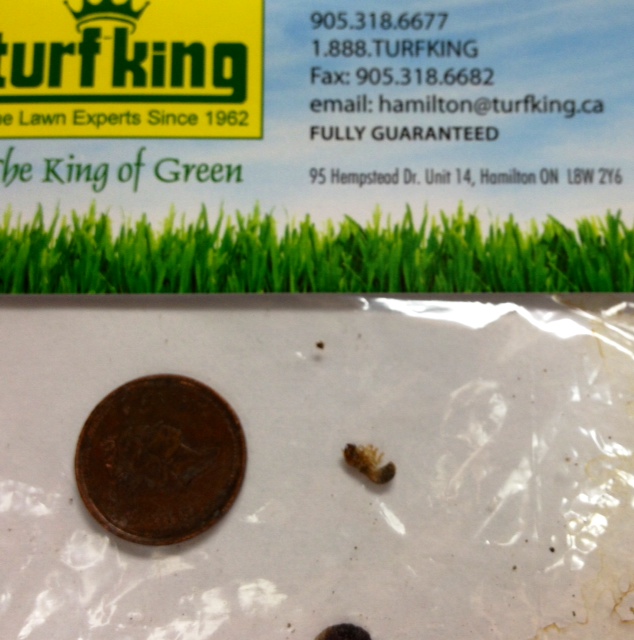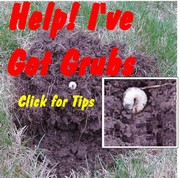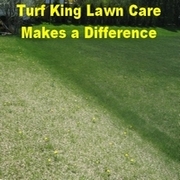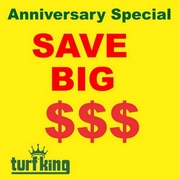Hi Lou
Out visiting lawn care customers and inspecting lawns today
Found some tiny grubs. At this size - they have only recently hatched from eggs. The adults are presumably European chafer. White grub larvae could also come from the eggs of Japanese beetle. Usually, though, Japanese beetles don't lay their eggs until later in August and are not likely to have hatched yet.
You can see that compared to the size of a penny, the grub larva is still very small.
For Lawn Care Treatments including Nematodes for White Grubs Call the Lawn Care Experts Turf King
There are NO easy solutions for Quack Grass under the McGuinty rules of the Cosmetic Pesticide ban
There is no selective treatment to kill quack grass I.e. nothing to kill it without killing or damaging the lawn grasses .
Any of the herbicides that are allowed now will not control quackgrass completely
Best thing is Roundup, but it legal only for controlling things like poison ivy. Roundup would be absorbed by the quackgrass blades and is taken down to the roots and will kill the entire plant.
If you wish to follow the rules, digging up would work if you dig at least 10-12 inches deep and sift through any clods of soil to make sure that there are not any roots in that particular clump of soil as a small piece if root can re-grow. Merely "pulling" is likely to be futile as you will likely leave a lot of roots behind .
If you're not in a hurry you could rototill the soil, then wait for the roots to dry out. But you would have to do this multiple times as the roots that are buried will remain viable. Plus - the downside is- the rototilling will also chop the roots into many many small pieces that can regrow.
The slow way to control quackgrass is to mow the lawn more often and to fertilize the lawn fairly regularly and fairly heavy. Regular lawn grass responds better to fertilizer than quack grass. This will help to outgrow the quack. By mowing more often, you will remove the faster growing quackgrass and slowly allow the other grasses to better compete against the quack grass. This process is likely to take several years.
Anyways - these are your options. Unless the quackgrass is removed completely it will come back. Even when we used roundup legally, there is always the risk the the soil contains some seeds which can sprout at some later time. But careful inspection of the lawn should be performed regularly to remove quackgrass when it is a small clump- before it spreads into a major nuisance












